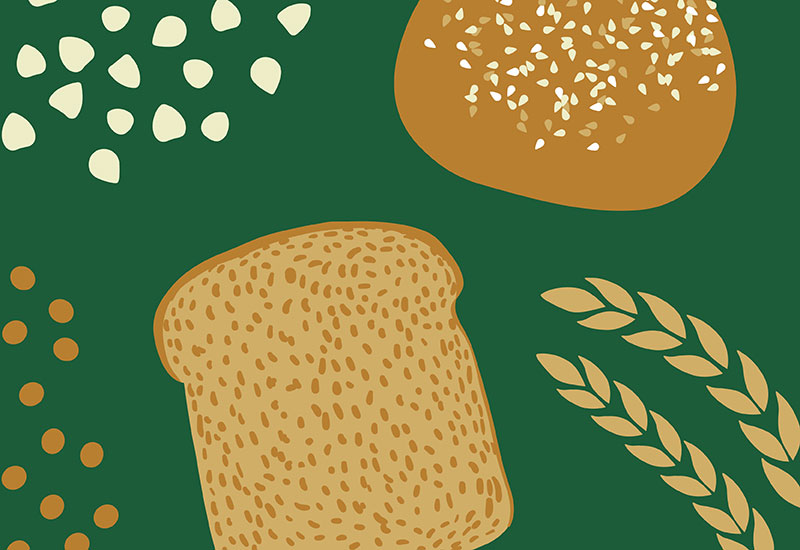Are Grains Actually Good for You?

The following article was written by Heinen’s Chief Dietitian, Melanie Jatsek RD, LD.
We all know fruits and vegetables are good for us. But what about grains? Well, that depends. Refined grains are stripped of fiber and important vitamins and minerals during processing. At one point they were good for you, but like many packaged foods, their nutrition suffers in direct proportion to the amount of processing they endure.
Club Fx Pillar 5 recommends choosing whole grains, preferably sprouted. If you’re seeking to upgrade your pantry, opting for whole grains is a step in the right direction because they offer more dietary fiber, B vitamins and minerals than their refined counterparts.
What is a Whole Grain?
From the Fx Top 100 Foods List, whole grains include steel cut oats, quinoa, wild rice and brown rice, along with breads, wraps and crackers made from these grains.
According to the Whole Grains Council, whole grains, or foods made from them, contain all the essential parts and naturally occurring nutrients of the entire grain seed in their original proportions. This means that 100% of the original kernel – all of the bran, germ and endosperm – must be present to qualify as a whole grain.
The following grains, when eaten in a form including the bran, germ and endosperm, are considered whole grain:
- Amaranth
- Barley
- Buckwheat
- Corn, including whole cornmeal and popcorn
- Millet
- Oats
- Quinoa
- Rice, both brown and wild rice
- Rye
- Sorghum
- Teff
- Triticale
- Wheat, including varieties such as spelt, emmer, farro, einkorn, Kamut®, durum and forms such as bulgur, cracked wheat and wheat berries
When considering grain-based products like bread and crackers, ignore the front of the package and check the list of ingredients. If the first ingredient contains the word “whole” (such as “whole wheat flour” or “whole oats”), it’s likely that the product is predominantly whole grain.
What is a Sprouted Grain?
Sprouting involves soaking grains in water until a sprout forms. After it is sprouted, it can be dehydrated and ground into flour, which is then used to make sprouted breads, crackers and chips!
Whole, unrefined sprouted grains are more beneficial for your health than non-sprouted because the soaking process allows for better digestion and nutrient absorption. They are also higher in fiber, antioxidants and beneficial enzymes, making them a better option for those with diabetes.
From the Fx Top 100 Foods List, sprouted grains include sprouted quinoa, rice, bread, wraps and crackers made from sprouted grains. Seeds, nuts, beans and lentils can also be sprouted and should be chosen when possible.
Key Takeaway
Heinen’s offers many convenient whole grain products for you to choose from. Give your grains an upgrade with these simple meal ideas. I promise you won’t miss your old favorites, and I’ll bet you’ll feel better too!
- Replace white rice with brown rice or sprouted quinoa as a side dish.
- Choose whole grain crackers like Mary’s Gone Crackers and serve with cashew-based cheese!
- Substitute white bread with sprouted for sandwiches and toast. My favorite is Ezekiel. Found in the Heinen’s Frozen Department, this bread is as wholesome as it gets, with no preservatives or artificial ingredients! Check out this recipe for Sprouted Avocado Toast with Superfood Toppings.


